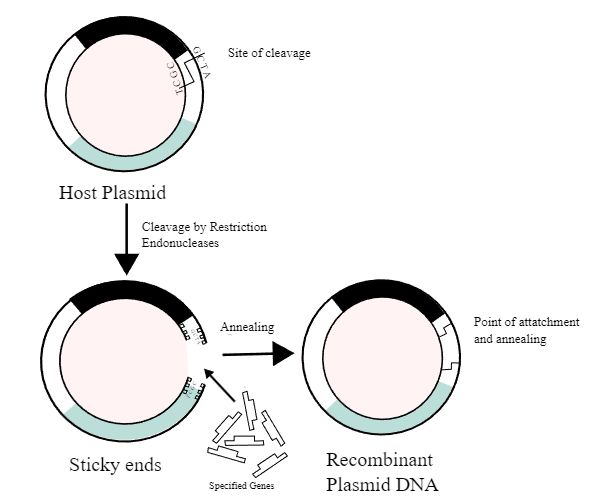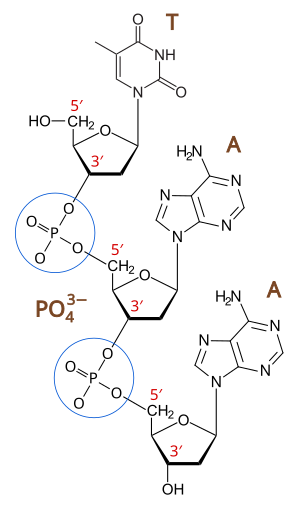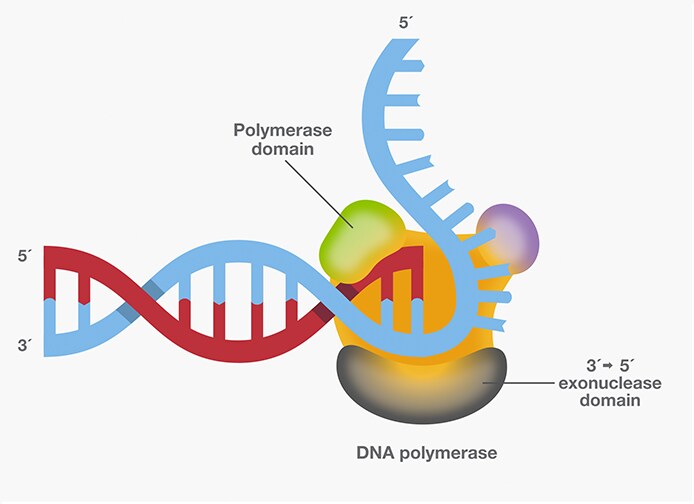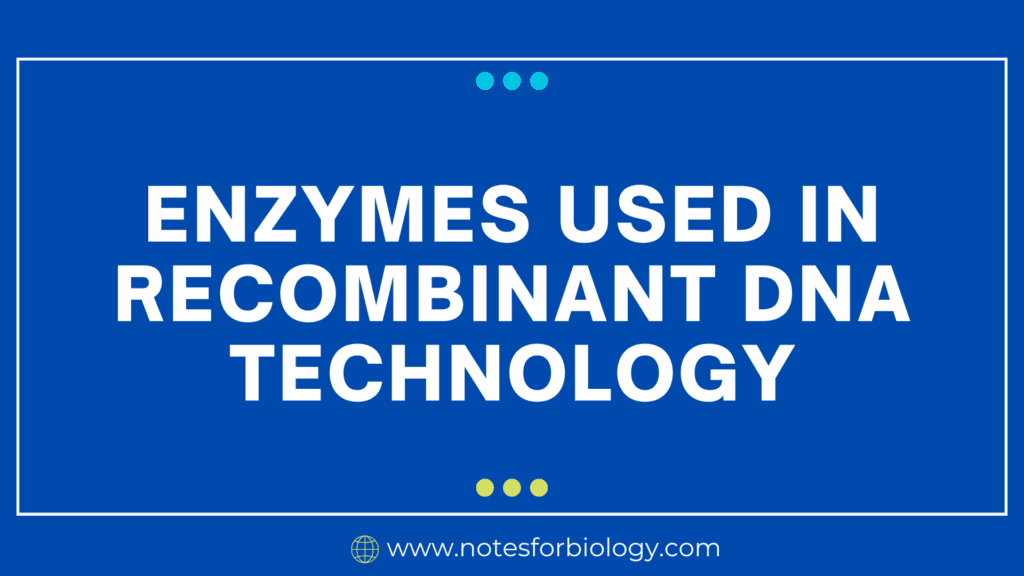What is Recombinant DNA?

Recombinant DNA (rDNA) technology, also known as genetic engineering, involves modifying the genetic material of organisms by combining DNA from various sources to create new genetic sequences. Enzymes play a crucial role in this process by helping to manipulate DNA in different ways, allowing the creation and study of recombinant DNA. Several types of enzymes are integral to this technology, each with a specific function, such as cutting, modifying, or joining DNA molecules. Below is an overview of the key enzymes involved in Recombinant DNA technology.
Table of Contents
1. Restriction Enzymes (Restriction Endonucleases)
One of the essential enzymes in rDNA technology is the restriction enzyme, often referred to as molecular scissors. These enzymes identify specific sequences of nucleotides in DNA and cut the DNA at those sites. Each restriction enzyme has a unique sequence it recognizes, called a restriction site, which is typically a palindromic sequence (a sequence that reads the same forward and backward). There are many different restriction enzymes, each cutting DNA at distinct locations, enabling scientists to target precise areas of the DNA for manipulation.
For instance, the enzyme EcoRI, sourced from Escherichia coli, identifies the GAATTC sequence and cuts between the G and A, creating “sticky ends”—overhanging single-stranded DNA segments that can easily bond with complementary sequences. Other enzymes, like HaeIII, create “blunt ends” by making straight cuts across both DNA strands. These enzymes are critical for generating DNA fragments that can be recombined or inserted into other DNA molecules.
2. DNA Ligase
After restriction enzymes cut the DNA, the fragments must be joined together, which is where DNA ligase comes into play. DNA ligase is responsible for connecting two DNA molecules by forming phosphodiester bonds between adjacent nucleotides, creating continuous DNA strands. This enzyme is particularly useful for inserting a piece of DNA (such as a gene) into a plasmid vector, which can then be introduced into a host organism, like bacteria, for cloning or gene expression.

DNA ligase is versatile, as it can join both sticky and blunt ends of DNA. This ensures that DNA fragments remain stably integrated into vectors, allowing them to replicate or express properly within the host organism.
3. Reverse Transcriptase
In some applications of Recombinant DNA technology, working with RNA rather than DNA is necessary, especially when studying gene expression or creating complementary DNA (cDNA) libraries. Reverse transcriptase is the enzyme responsible for converting RNA into DNA by synthesizing DNA from an RNA template. This enzyme, discovered in retroviruses, helps generate cDNA from mRNA (messenger RNA), which can then be inserted into vectors for cloning or further study.
This process is especially helpful when researchers want to clone a gene without including non-coding regions, as cDNA represents only the expressed portion of the gene, excluding introns (the non-coding parts of DNA).
4. DNA Polymerases

DNA polymerase enzymes are essential for synthesizing new DNA strands. The most widely used DNA polymerase in laboratory settings is Taq polymerase, an enzyme derived from Thermus aquaticus, a bacterium that thrives in high-temperature environments such as hot springs. Taq polymerase is especially useful in the polymerase chain reaction (PCR), a technique for amplifying specific DNA sequences. PCR requires alternating cycles of heating and cooling, and Taq polymerase’s ability to remain functional at high temperatures makes it ideal for this process.
DNA polymerases also play a key role in DNA sequencing, where they help synthesize new DNA strands based on the template sequence, enabling researchers to determine the nucleotide sequence of a DNA fragment.
5. Exonucleases and Endonucleases
In addition to restriction enzymes (a type of endonuclease), other nucleases are vital in rDNA technology. Exonucleases remove nucleotides from the ends of DNA molecules, while endonucleases cut within DNA sequences. These enzymes are useful for trimming DNA to specific lengths or removing unwanted sequences before cloning or analysis.
For instance, Exonuclease III can remove nucleotides from the 3’ end of DNA, while Lambda exonuclease digests DNA from the 5’ end. These enzymes allow researchers to manipulate DNA fragments with greater precision in cloning experiments.
6. Topoisomerases
During DNA replication and transcription, the DNA helix can become overwound or supercoiled. Topoisomerases are enzymes that help relieve this tension by cutting one or both DNA strands, allowing the helix to unwind before rejoining the strands. In rDNA technology, topoisomerases are used to insert DNA into vectors without the need for restriction enzymes or DNA ligase in certain cloning techniques.
For example, Topoisomerase I from Vaccinia virus is used in “Topo cloning,” a method that facilitates the direct ligation of PCR products into a vector with the help of this enzyme.
Conclusion
Enzymes are essential tools in recombinant DNA technology, enabling scientists to cut, modify, and join DNA sequences with precision and control. From restriction enzymes that cut DNA at specific sites to DNA ligase that joins fragments, and polymerases that amplify sequences, these enzymes make it possible to create recombinant molecules and explore genetic functions in ways that have transformed genetics, medicine, agriculture, and biotechnology. The use of these enzymes has revolutionized the study and manipulation of genes.
Frequently Asked Questions (FAQ)
What is the purpose of topoisomerases in recombinant DNA technology?
Topoisomerases help relieve supercoiling of the DNA helix during replication and transcription by cutting and rejoining DNA strands. In some cloning methods, topoisomerases are used to facilitate the insertion of DNA into vectors without the need for other enzymes like DNA ligase.
What are enzymes used for in recombinant DNA technology?
Enzymes play a crucial role in recombinant DNA technology by cutting, modifying, and joining DNA sequences. They help manipulate DNA fragments to create recombinant molecules, enabling gene cloning, gene expression studies, and genetic engineering.
Related Articles




